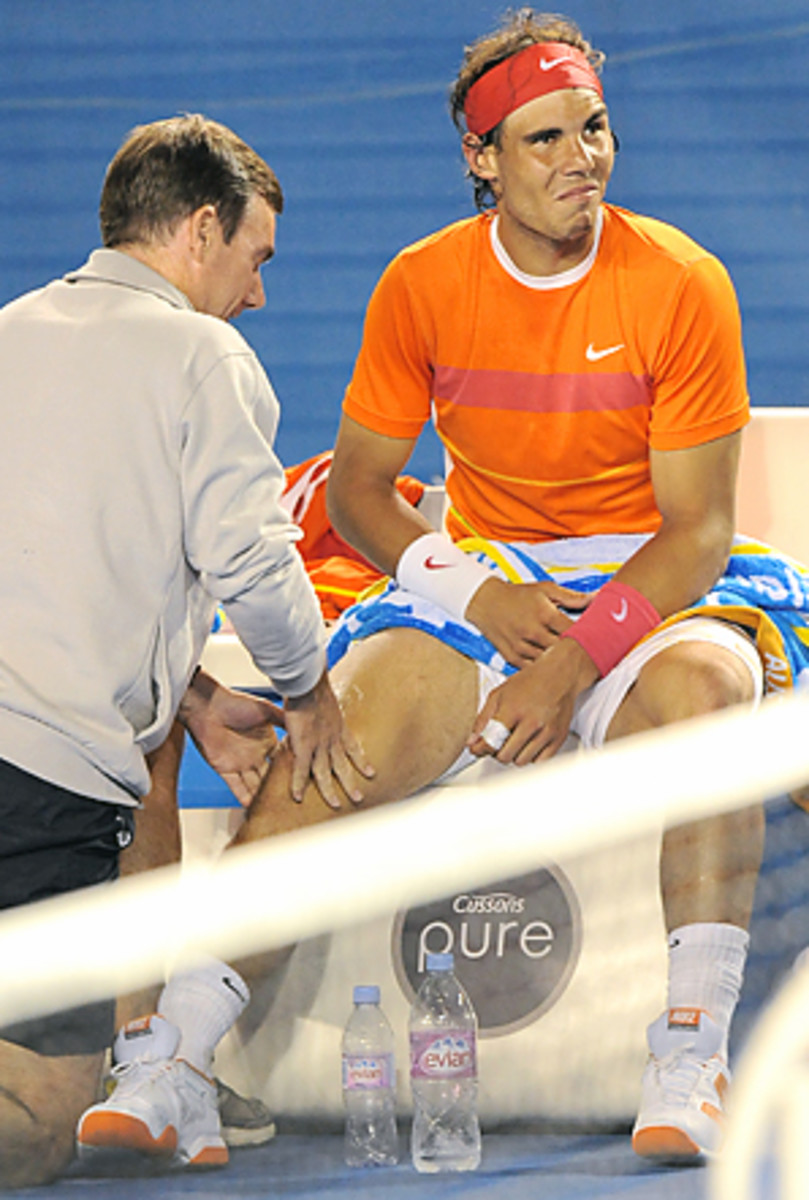
My five-step plan for streamlining the overlong tennis season
"How can I miss you if you won't go away?" --Dan Hicks
We gather today to make sense of the professional tennis tour. If you hear snickering, it's coming from the back of the room, where various tour and ITF officials have dropped in. They won't hear of this, nor does it constitute anything but fantasy. But we're going ahead with it, anyway. It just might resonate with the public.
There's a concept known as renewal, and we're about to experience it in baseball this week, as the pitchers and catchers report to spring training. There is pure romance to the thought of players springing back to life after a long, cold winter, just as football fans savor those late-summer reports of their teams getting back in shape.
Tennis doesn't do renewal. In this sport, the "off-season" amounts to a few nights with the family over the Christmas holiday. Then it's panic time: A tournament starting four days into the new year. This is literally an 11-month calendar, bringing cries of protest from several top players and believed to be central to one of the sport's great misfortunes: the breakdown of Rafael Nadal's cherished body.
I had a brief chat with Justin Gimelstob, one of three player representatives on the ATP Board of Directors, at the tournament in San Jose over the weekend. He's concerned about the schedule, but he also knows the seemingly endless procession of lesser tournaments (a) makes it possible for up-and-coming players to get their rankings in order, and (b) offers the kind of worldwide exposure that has produced so many great players from around the globe. (The Feb. 1 ATP rankings showed players from 10 different countries in the top 10, a comprehensive brand of globalization no other sport can match.)
"I'm very conscious of how to maintain the integrity of the calendar," Gimelstob said. "There would be value if we could give the players more time off, and value to the fans, as well, giving them a bit of a break from the non-stop tennis action. There may very well be a process of attrition (in the future), but it's a constant balancing act. We have to look at what's realistic. In my opinion, it would be feasible to carve out a couple weeks at the end of the year."
With all due respect to the ATP, that's not nearly enough. On my calendar (I hear snickering already), the sport takes three months off: November, December and January. Vacation time. No tournaments at all. Time to rest, heal those injuries, come back with a totally refreshed outlook on the game.
The next step is to create proper spacing between the majors. Who comes up with an Australian Open in January (when the weather is generally about 118 degrees in Melbourne), then a four-month wait until the French Open, then a complete rush job into Wimbledon? I've got the Australian beginning in early March (the weather will be fine), the French in May, Wimbledon in July and the U.S. Open in its regular September slot. Fair and proper timing.
The next step is to create a top-level schedule that resembles an actual sporting season. I call it The Big Sixteen. Each major has three warmup events, with the kind of prestige associated with Indian Wells or Key Biscayne. Three hardcourt warm-ups, three on clay, three on grass, then three on the U.S. summer circuit. That's 16 total, and that's where everything is decided in terms of rankings and year-end stature. As often as possible (probably not practical on grass), they would have both men and women involved, just as you see at the majors.
I realize that Key Biscayne-level tournaments already carry far more weight than, say, Bucharest or Marseille, but most fans are baffled as to how this works. The ladder of prestige runs downward from the Grand Slams to the World Tour 1000s to the World Tour 500s and 250s. The players get it, no question. But does it have to be that friggin' complicated? There's an arrogance to all this, undoubtedly the residue of a sport with too many self-obsessed factions (ATP, WTA, USTA, ITF) to address common sense.
Another thing: On my calendar, "year-end" doesn't mean the ATP World Tour Finals or the Sony Ericsson Championships. Those November events are wiped right off the map. What's the point? Beyond hard-core fandom, nobody has the slightest clue they're even taking place. Absolute closure should come at the U.S. Open. The season ends right there, and if the issue of the No. 1 ranking is at stake, we'll get the answer right there in Arthur Ashe Stadium.
So the Big Sixteen runs from February through September. I'd set aside October exclusively for Davis Cup and Federation Cup, so fans can actually pay attention. James Blake calls Davis Cup "the rocket science event," because nobody can quite figure it out. Put it all in one place, alternating sites each year, and watch it compete with baseball's postseason for compelling, sustained action.
What to do with all those lesser tournaments, often jammed three-at-once into a single week? No clue. Keep as many as possible, I say. They seldom offer anything close to a world-class field to begin with, so let them fall where they may. The rankings system would be turned upside down, but it couldn't be any more complicated than a few years back, when you might find a player at 118 on the "Entry List" and 63 in the "Champions Race." Tennis is hardly in position to reject a plea for simplicity.
So there you have it. If any of this makes sense to you, please, hold your applause. The room is now empty, save the echo of scorn.





